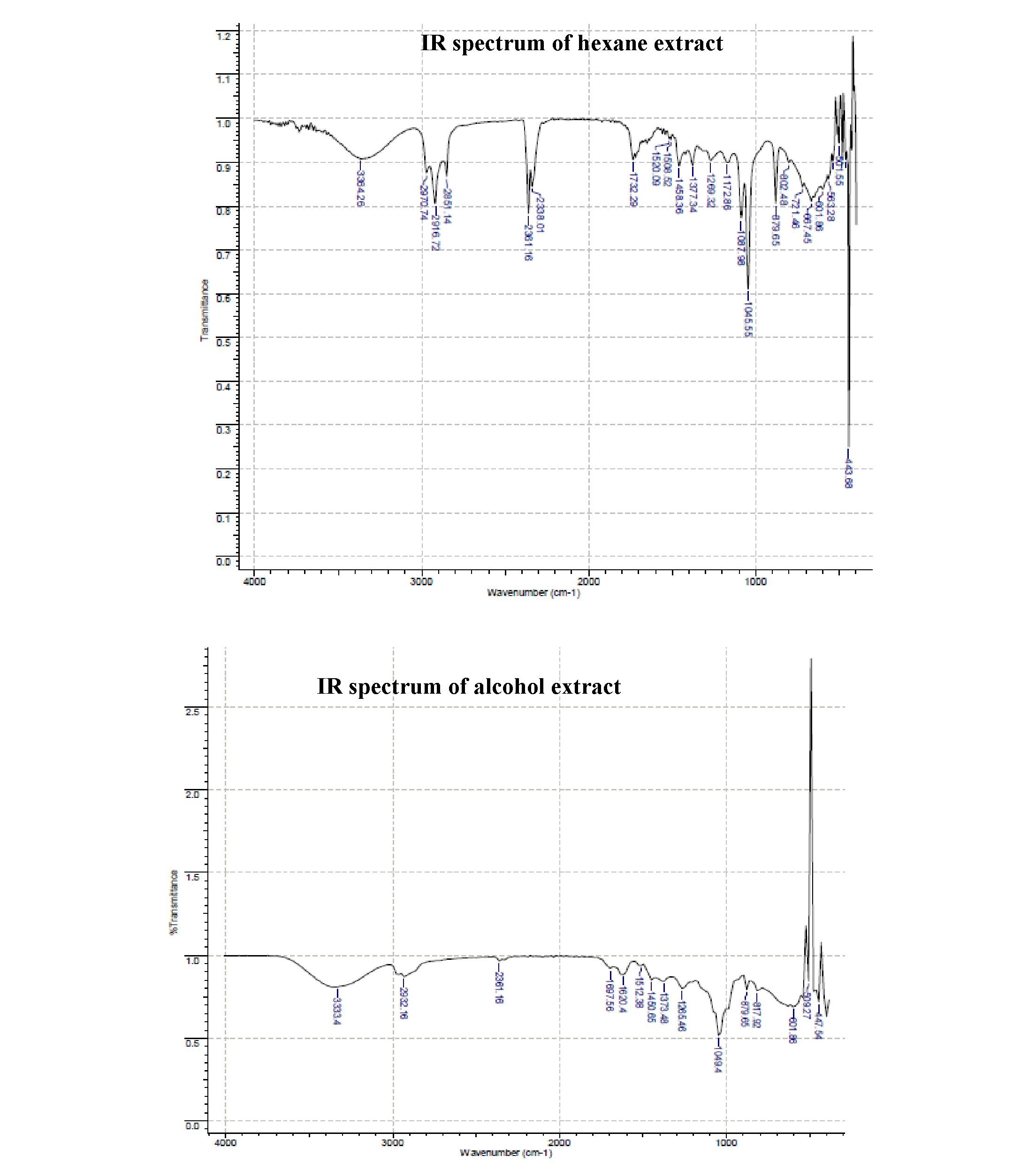Summary
Phlomis salicifolia is a perennial herbaceous plant of the genus Plomis L. of the family Lamiaceae. On the territory of the Republic of Kazakhstan the species is widely distributed in the steppes and among shrubs, on stony mountain slopes, meadows. The plant is popular in folk medicine as anti-inflammatory agent in diseases of the gastrointestinal tract, upper respiratory tract, as well as to boost immunity, also has healing and toning, antibacterial action. This article describes the results of a study of phytochemical reactions and IR spectral analysis.
Key words: Phlomis salicifolia, IR spectrometer, phytochemical reactions, acetonitrile extract, benzene extract, hexane extract, chloroform extract
Introduction. Now has the increased attention to the official and folk medicine, mostly due to the centuries-old experience of use of medicinal properties of plants and their great therapeutic value and no side effects that are often observed in the use of chemicals. This arouses great interest for a more detailed study of already known properties of wild medicinal plants and the search for new [1].
Particularly noteworthy are plants of the genus Phlomis L. This genus belongs to the family Lamiaceae and distributed on the territory of Kazakhstan, Mongolia, Middle and East Asia, West Siberia. Live plant genus in the steppes and scrublands, rocky hillsides, meadows, mixed herbal forests and edges [2]. Members of the genus Phlomis L. is widely used in traditional and folk medicine, as they have a wide range of nutrients. In this regard, work on identifying their component structure. On the territory of South Kazakhstan grows of the genus Phlomis L. Phlomis salicifolia. It is a perennial bearing rosettes of leaves and flowering stems. Root rather thick, fibrous. Leaves dark green above, dull, wrinkled from depressed veins, more or less stellate pubescent, below with prominent veins, grayish from dense stellate pubescence [3].
The purpose of the study: phytochemical study of Phlomis salicifolia in the flora of southern Kazakhstan.
Materials and methods. Air-dry raw material the investigated plants were collected in South Kazakhstan region S. Kaskasu and S. Boraldai. To identify the macroscopic, microscopic analysis of raw materials, and also to determine its purity (moisture) at the global Fund XI edition (Volume1) [4]. For extraction of the used organic solvents: hexane, benzene and 96%-ethanol, acetonitrile. To detect the
118major groups of biologically active substances in plant raw materials used phytochemical reactions. IR spectral analysis of the extracts carried out on the device infralum FT-08.
Results and discussion. 1. The result of phytochemical reactions in Phlomis salicifolia discovered flavonoids, mucus, amino acids, alkaloids, saponins, tannins, polysaccharides.
2. The results of IR spectral analysis
 119
119
3. The results of IR spectral analysis of the extracts: the marked absorption bands characteristic of hydroxyl (3364 - 3352см-1) and carbonyl (1651см-1), aromatic system (1508 and 1520см-1), methyl groups (2970-2854см-1), methylene groups (1377 cm-1), ketones (3364см-1), urethane (1732см-1), phenols (1172см-1), ester bonds (1087см-1), nitrogen compounds (1377см-1) and other absorption bands.
 120
120
On the basis of IR spectral analysis, we assume that the extracts of Phlomis salicifolia contains alkaloids, flavonoids, amino acids, carbohydrates, saponins, organic acids. Received IR spectral data confirmed the results of the qualitative analysis on the content of functional groups of alkaloids, flavonoids, amino acids, saponins.
Conclusion. In further studies it is planned the release of biologically active substances and their analysis using modern physico-chemical methods.
References:
- Vasina O. N., Makoveeva O. S. Methodical recommendations for the study of the traditions of folk medicine on the example of the theme "Medicinal plants" // Actual problems of teaching physico- mathematical and natural science disciplines in school and University. 2015, Pp. 267-271.
- Komarevtseva E. K. the Development of Phlomis tuberosa L. in the Altai mountains and the structure of its coenopopulations // Modern concepts of ecology of biological systems and their role in solving the problems of nature conservation and environmental management. 2016. S. 103-105.
- G. A. Lazkov. Taxonomy and distribution of Phlomis salicifolia regel sensu lato and close to the Central Asian species (phlomis l. Sect. Oxyphlomis (benth.) Kamelin et makhm., lamiaceae)
- The state Pharmacopoeia XI edition (volume 1), 1987.
- Turebekova G. A., Patsaev A. K. Daurenbekov K. N., Merkulov A. S., Tanganov B. R. a Study of the Jerusalem sage willow leaf flora of southern Kazakhstan. Collection of scientific works of international scientific-practical conference "Innovative achievements of modern pharmacy and medicine", Shymkent. Tom2, 2016.- P. 151-152.